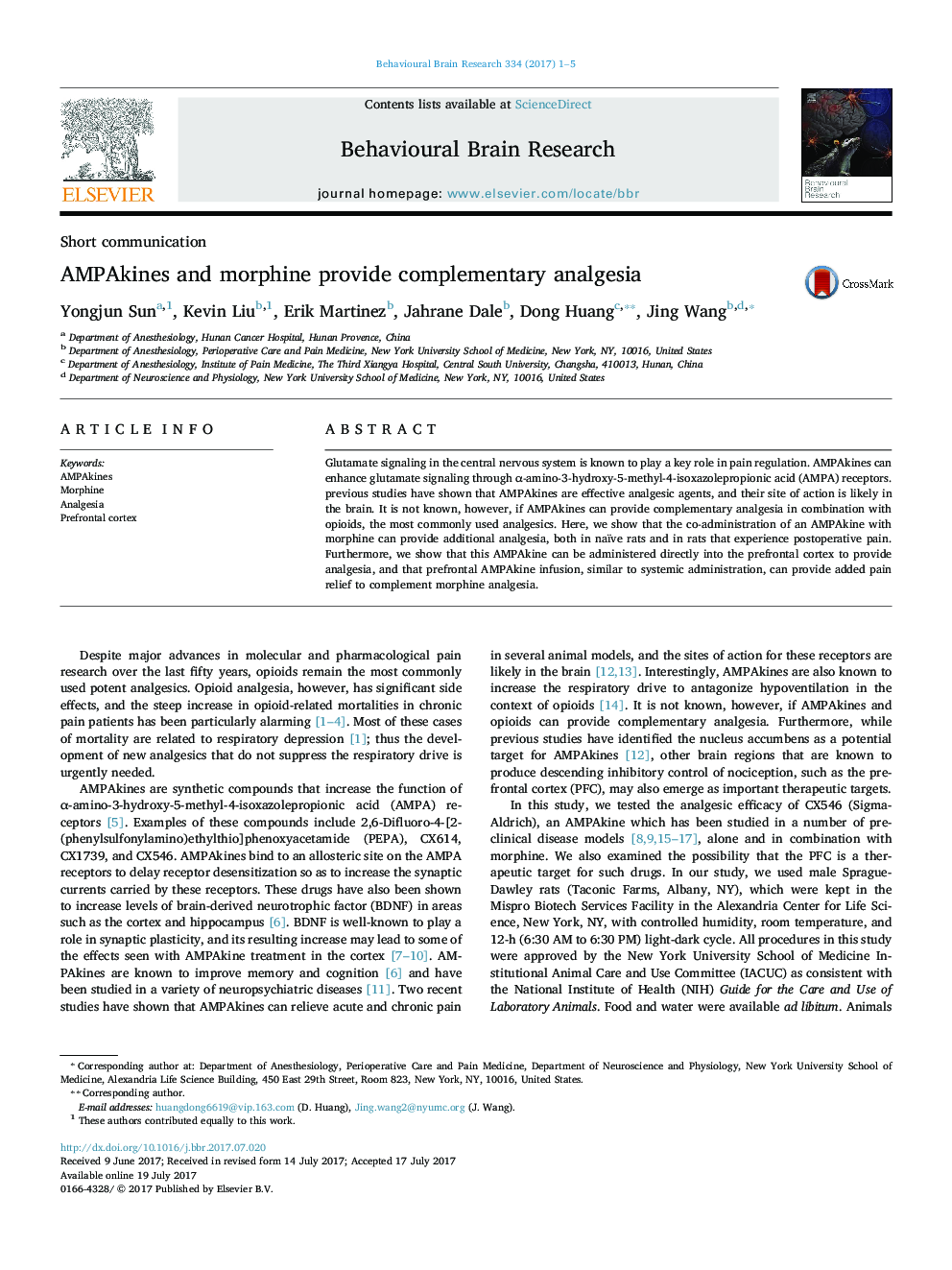| Article ID | Journal | Published Year | Pages | File Type |
|---|---|---|---|---|
| 5735089 | Behavioural Brain Research | 2017 | 5 Pages |
Abstract
Glutamate signaling in the central nervous system is known to play a key role in pain regulation. AMPAkines can enhance glutamate signaling through α-amino-3-hydroxy-5-methyl-4-isoxazolepropionic acid (AMPA) receptors. previous studies have shown that AMPAkines are effective analgesic agents, and their site of action is likely in the brain. It is not known, however, if AMPAkines can provide complementary analgesia in combination with opioids, the most commonly used analgesics. Here, we show that the co-administration of an AMPAkine with morphine can provide additional analgesia, both in naïve rats and in rats that experience postoperative pain. Furthermore, we show that this AMPAkine can be administered directly into the prefrontal cortex to provide analgesia, and that prefrontal AMPAkine infusion, similar to systemic administration, can provide added pain relief to complement morphine analgesia.
Related Topics
Life Sciences
Neuroscience
Behavioral Neuroscience
Authors
Yongjun Sun, Kevin Liu, Erik Martinez, Jahrane Dale, Dong Huang, Jing Wang,
